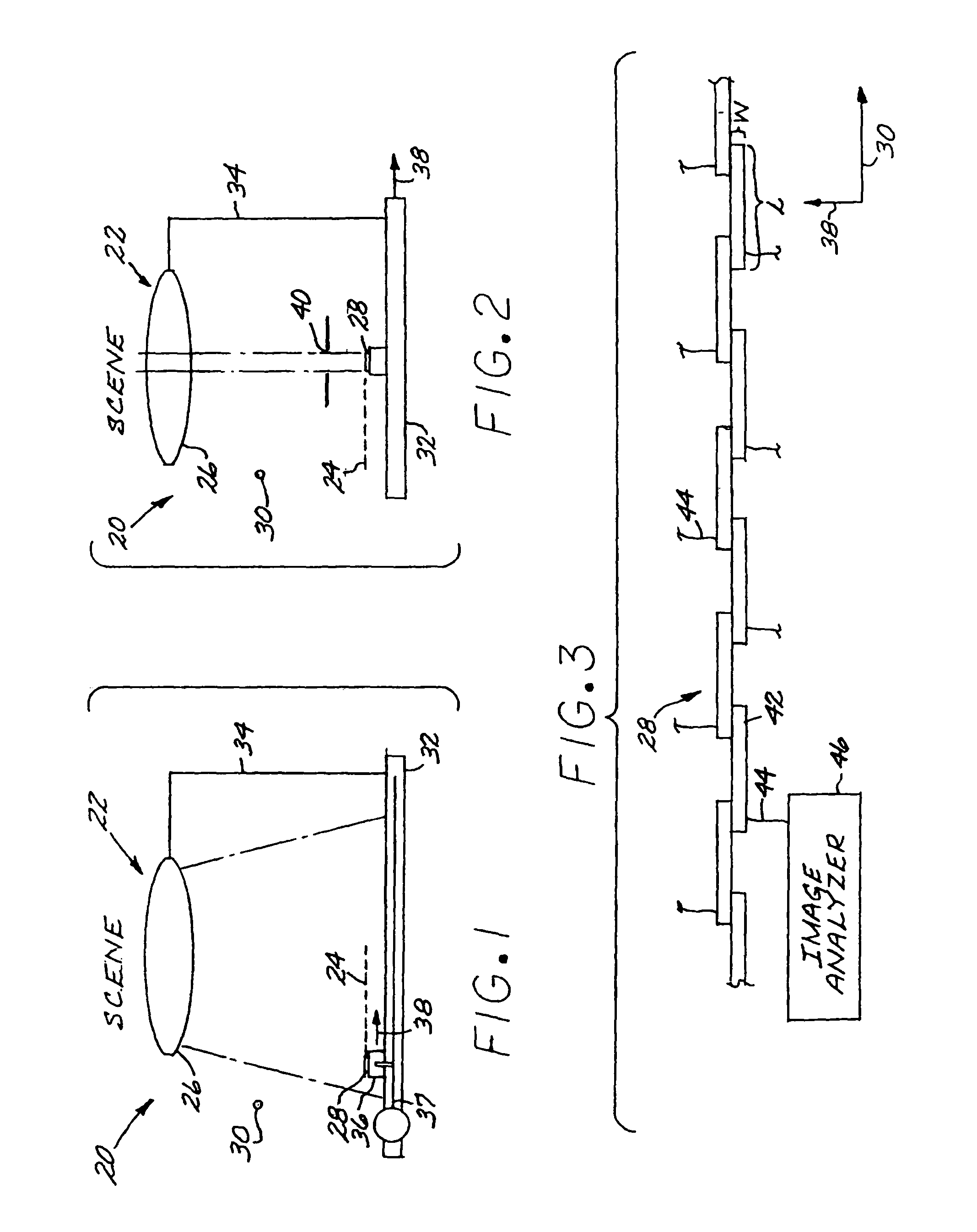Imaging sensor system with staggered arrangement of imaging detector subelements, and method for locating a position of a feature in a scene
a sensor system and image technology, applied in the field of lightimaging sensor systems, can solve the problems of loss of sensitivity, natural locational uncertainty of image within the detector subelement, locational uncertainty, etc., and achieve the effect of improving the positional accuracy of image location determination, improving the locating of the position of the feature in the scene, and increasing the accuracy of determined location
- Summary
- Abstract
- Description
- Claims
- Application Information
AI Technical Summary
Benefits of technology
Problems solved by technology
Method used
Image
Examples
Embodiment Construction
[0034]FIGS. 1-2 each depict an imaging sensor system 20 including an optics system 22 that images a feature of a scene at an image plane 24. The optics system 22 may be of any type, and may include lenses, mirrors, and or other optical components in any operable combination to address a specific imaging requirement. In the figures, the optics system 22 is schematically depicted as a single lens 26, but it is typically more complex than that. The scene feature is projected on the image plane 24 with some blurring, due to aberration and diffraction effects of the optical system. The blur of high-quality optical systems tends to be dominated by diffraction effects of the optical system, and the blur of low-cost systems by aberrations. In all cases, each point in the scene is imaged as a blur spot. The diameter of this spot is referred to as a “blur diameter”, and is a characteristic of the optics system 22. Blur most often is discussed as a circular disk, even though it may in fact hav...
PUM
 Login to View More
Login to View More Abstract
Description
Claims
Application Information
 Login to View More
Login to View More - R&D
- Intellectual Property
- Life Sciences
- Materials
- Tech Scout
- Unparalleled Data Quality
- Higher Quality Content
- 60% Fewer Hallucinations
Browse by: Latest US Patents, China's latest patents, Technical Efficacy Thesaurus, Application Domain, Technology Topic, Popular Technical Reports.
© 2025 PatSnap. All rights reserved.Legal|Privacy policy|Modern Slavery Act Transparency Statement|Sitemap|About US| Contact US: help@patsnap.com



